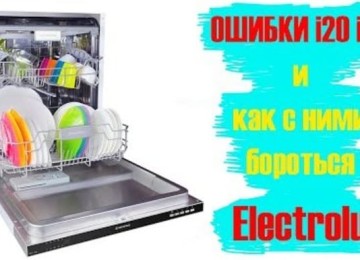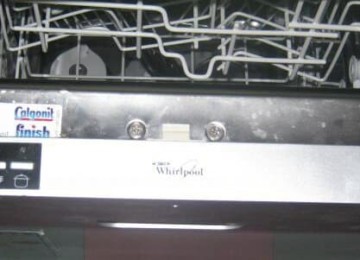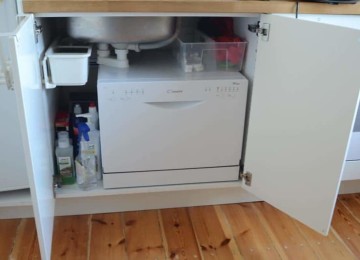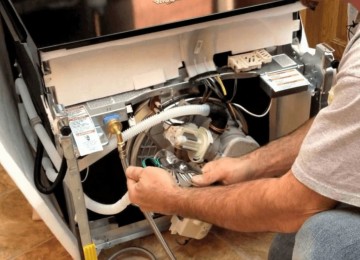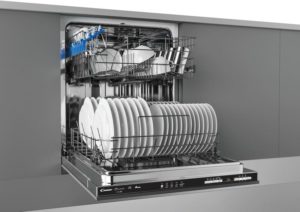 Modern society, realizing the value of time, is increasingly trying to preserve it. It is impossible to imagine our life without the help of household appliances; they not only save time and effort, but also become part of the interior design and home comfort. Thanks to technological innovations, people devote more time to themselves and their family. One of the main assistants of every household is a dishwasher.
Modern society, realizing the value of time, is increasingly trying to preserve it. It is impossible to imagine our life without the help of household appliances; they not only save time and effort, but also become part of the interior design and home comfort. Thanks to technological innovations, people devote more time to themselves and their family. One of the main assistants of every household is a dishwasher.
It will keep the kitchen space clean and tidy. Many people consider the process of choosing a dishwasher to be a rather complicated and incomprehensible task; they think that in order to make the right choice you need to go to stores, spend hours choosing the right model and talking with professional sales consultants who do not care about your positive result when finding what you need, they are just trying sell what they need to sell.There is another, simpler and more effective way - searching for information on the Internet. Today, there are thousands of forums and articles about choosing anything with detailed explanations and supporting advice. This article contains an overview of built-in dishwashers.
What dishes can be washed in the dishwasher?
Everyone wants to use their new purchase for a long time and effectively. In order for your dishwasher to really help you around the house and not bring you nothing but disappointment, it must be handled correctly. The main question that owners of a new dishwasher face is “Which dishes can be washed in the dishwasher, but which ones cannot?” Many people skip the tips described in the product instructions, which can lead to unpleasant consequences. We invite you to familiarize yourself with several tips for preserving and extending the life of your dishwasher.
Let's start with the fact that it is not recommended to wash in the dishwasher:
- Wooden cutlery, such as boards for cutting food and meat, and other kitchen appliances made of wood, especially if their surface has a varnish treatment. The interaction of varnish and hot water with steam can lead to cracks, the varnish may burst and peel off, and the product will bend and become uneven.
- Aluminum.
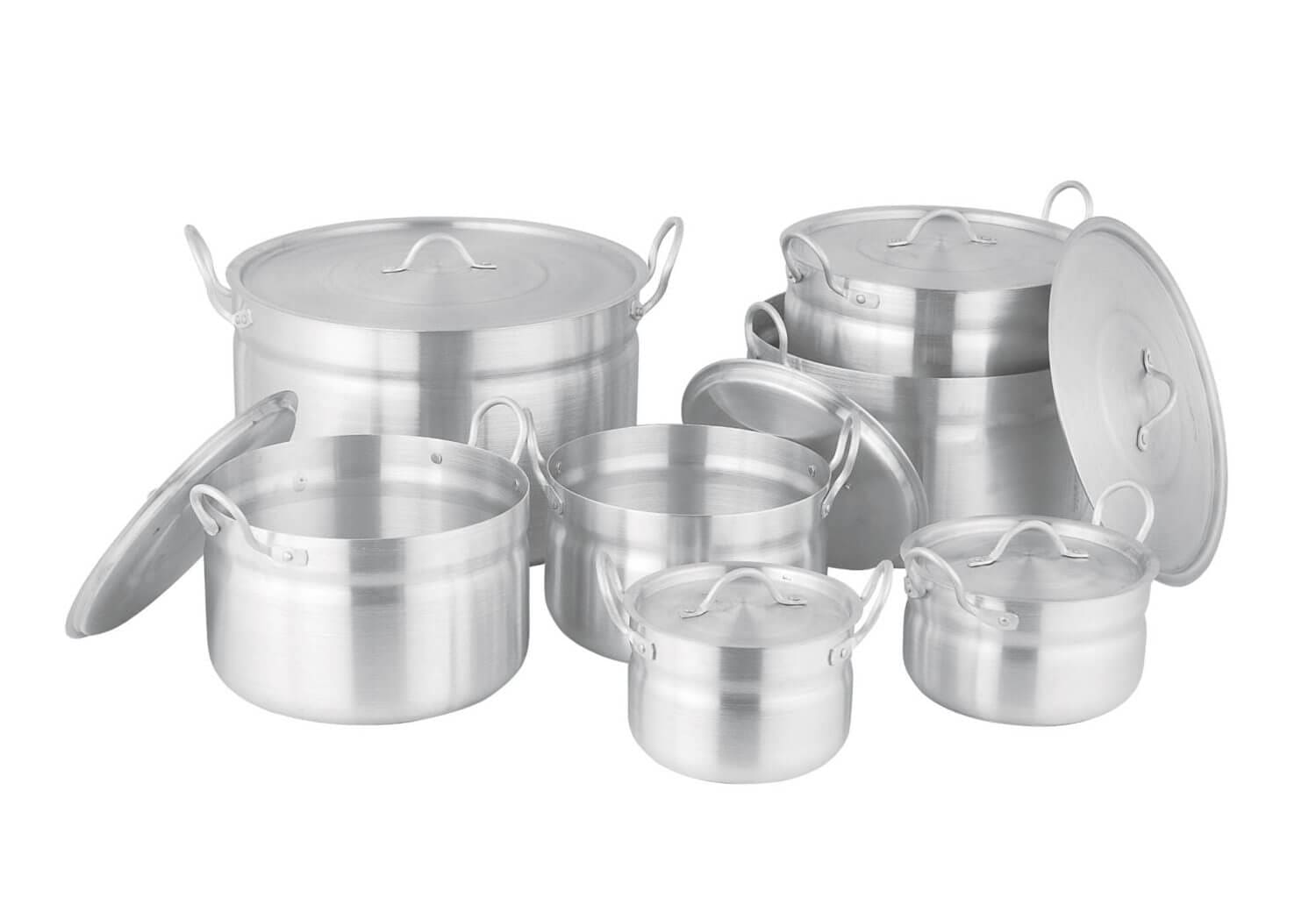 Metal utensils made of aluminum oxidize due to exposure to detergents. A black coating appears on such dishes. It is almost impossible to correct such an oversight. You can try to remove traces of plaque with sandpaper, but such items cannot be restored to their original appearance. Although it is quite possible to use them.
Metal utensils made of aluminum oxidize due to exposure to detergents. A black coating appears on such dishes. It is almost impossible to correct such an oversight. You can try to remove traces of plaque with sandpaper, but such items cannot be restored to their original appearance. Although it is quite possible to use them. - Porcelain. The fact is that the designs with which gilded porcelain dishes are decorated do not interact well with hot water, so they can fade over time. It is best to wash such dishes the old fashioned way - by hand. The exception is modern porcelain tableware, which is intended for daily use.
- Cast iron.
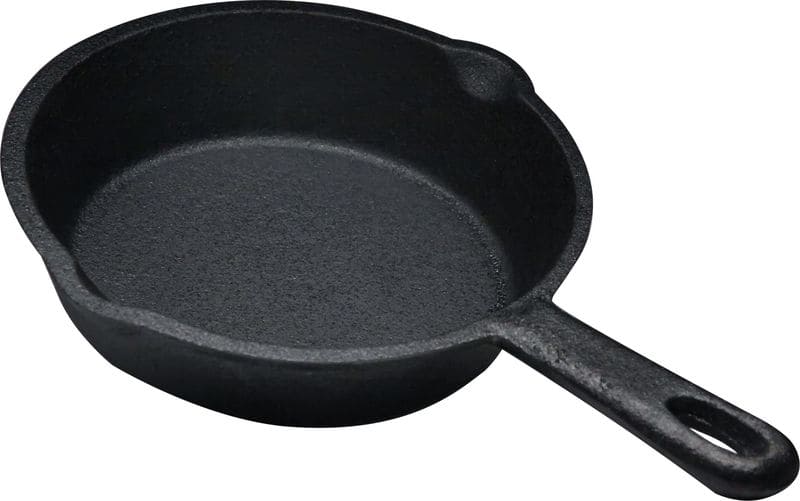 Cast iron products and utensils made of cast iron are also very durable. If such dishes are treated with due care, they can last for many years. This result is achieved by hardening cast iron. Using a dishwasher to wash cast iron items will reduce their strength and may also cause rust. This applies not only to cast iron cookware, but also to burners, stands, meat grinders and parts of these items.
Cast iron products and utensils made of cast iron are also very durable. If such dishes are treated with due care, they can last for many years. This result is achieved by hardening cast iron. Using a dishwasher to wash cast iron items will reduce their strength and may also cause rust. This applies not only to cast iron cookware, but also to burners, stands, meat grinders and parts of these items. - Crystal. Items made of thin and fragile crystal become cloudy very quickly because they are exposed to detergents used to wash dishes in machines. Microcracks and chips may appear on their surface. Of course, there are dishwashers with a mode for washing fragile dishes.
- Kitchen knives. If you are a fan of sharpening knives, then washing such utensils in the dishwasher is not the best choice. Such objects can damage the inside of the dishwasher. In any case, the high temperature inside the device makes the blades of knives dull and dull. It is also not recommended to use a dishwasher to clean old dirt from dishes. This can damage and clog the filters, and the dishes will remain dirty. Under no circumstances should you wash electrical items in such devices. There is no guarantee of their further use, since they will go through several stages of mechanical action - washing and drying.Electrical items are best cleaned by hand.
Let's take a look at the dishes and items that can be washed in the dishwasher:
- Plastic. Plastic products (plastic food containers, plastic cutting boards, etc.) do well in a hot environment, so you don’t have to worry about their integrity.
- Stainless steel cookware. Stainless steel items such as frying pans, saucepans, saucepans, ladles, thermoses, mugs and cutlery can also be cleaned in the dishwasher without any problems.
- Ceramics.
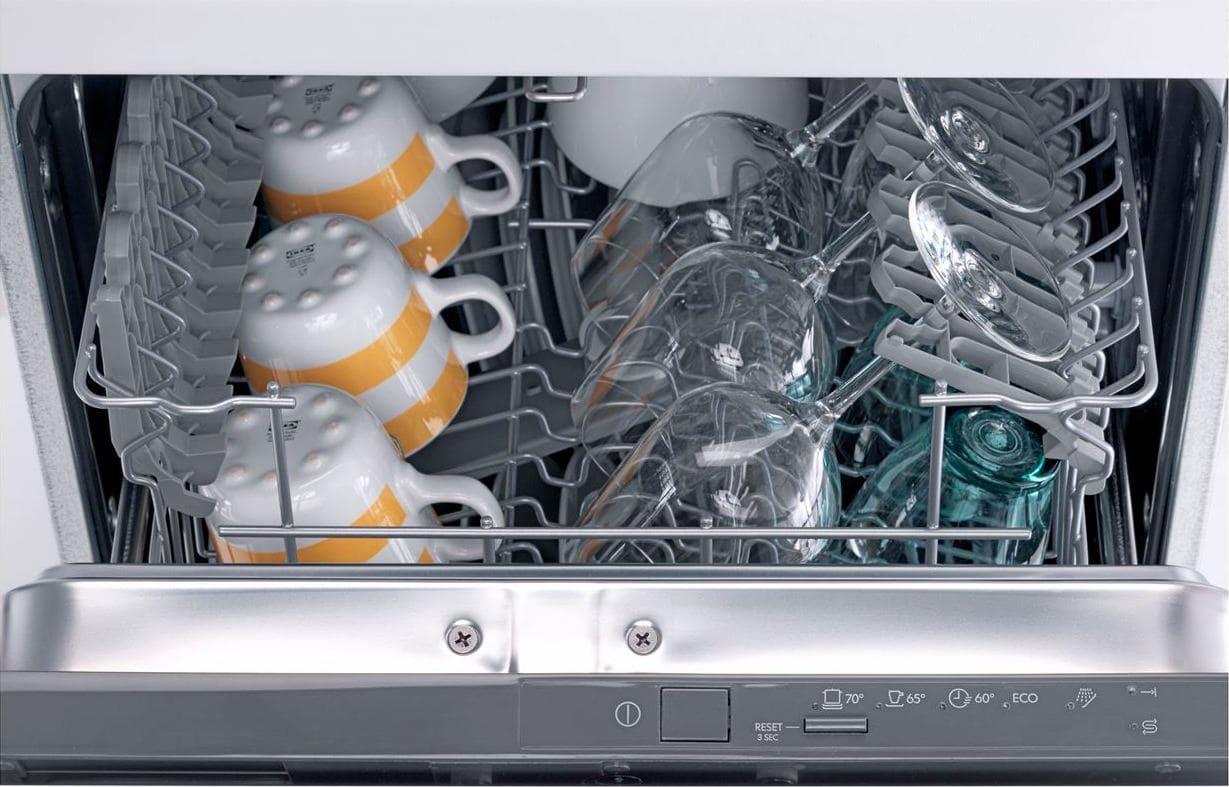 Ceramic products do not crack when interacting with hot water and steam, and the designs on such dishes remain intact.
Ceramic products do not crack when interacting with hot water and steam, and the designs on such dishes remain intact. - Glass. Good strong glass does not lose its properties during hot processing, no plaque appears on it, and the shine does not disappear. It is advisable not to place glass objects close to the inner walls of the dishwasher, as due to high water pressure they can be mechanically displaced and break. The dishwasher is also good for cleaning juicers and plastic products. silicone.
Built-in dishwashers are good for washing and cleaning more than just kitchen utensils. It is quite possible to load such a device, for example, with a brush from a vacuum cleaner. But first you need to remove hair and small debris from it so as not to spoil the filter of the machine. Running it through the dishwasher will not only clean the product, but will also get rid of excess germs and bacteria due to the high processing temperature. Few people know that you can even wash fruits and vegetables in the dishwasher, but always without detergent.
Of course, if there is any dirt or sand stuck to them, they must be removed in advance to prevent the filter from clogging.Small parts, such as children's toys or construction sets, can be washed in the machine only by placing them in a special washing bag in advance, unless, of course, you want to collect them all over the machine later.
By the way, toys can also be washed in the washing machine this way. The dishwasher has a favorable system for processing and disinfecting rags and sponges used for cleaning the house, jewelry without complex inclusions, sports equipment and even lamps. You can come up with as many applications for using a dishwasher as you like, but which of them are really useful is up to the owner to decide.
Features of built-in dishwashers
Buyers choose the best dishwashers, which are built in at 45 centimeters, based on parameters such as dimensions and location. If the kitchen is small in size, then the choice falls on narrow equipment. An interesting feature of such machines is that the load of dishes for washing reaches 7-10 sets of kitchen utensils at a time. Although the standard European set is 11 sets. The most popular option among users is a width of 45 centimeters, as it corresponds to the width of standard kitchen furniture. To select the correct dishwasher, you need to adjust the width of the device and the specifics of the specific model:
- accuracy of geometric information is required;
- it is necessary to take into account and leave a small space between the walls of the equipment and the edges of the kitchen unit;
- You must carefully study the instructions before installing a new dishwasher;
- it is necessary to take into account that connection to the drainage system from the machine requires a special hole for the inflow and flow of liquid, as well as an electrical cable;
- It is necessary to install the equipment in a place in the kitchen where there is a large amount of free space in front of the dishwasher for proper and easy opening of the door.
When choosing the dimensions of a dishwasher, the buyer must take into account the size of the kitchen in which it will be used. Built-in appliances were created to save space in the home.
Advantages and disadvantages of built-in dishwashers
Each type of technology has both advantages and disadvantages. Let's talk about the advantages of built-in dishwashers.

Ease of use
In order to start using the machine, you just need to set up the influx of clean water from the water supply and the outflow of dirty water into the sewer. When installing a dishwasher, it is recommended that you contact a professional to maintain the warranty of the device.
Operational safety
Dishwashers have an automatic stop function in the event of malfunctions or force majeure situations. In this case, water will stop flowing into the machine. The described function is called “Aqua-stop”; it will certainly protect against a flood in the kitchen.
Silent operation
Many people do not have time to wash the dishes during the day or evening; a good solution is to run the dishwasher at night. The user does not have to worry about inconvenience, because almost all modern devices operate silently.
Autonomy
Dishwashers are able to perform work without human intervention, which can be very convenient. You just need to set the operating time, and the machine will do everything itself.
Cookware quality
People who have never used such devices worry about the safety of their kitchenware, thinking that the machine will spoil it over time. You don’t have to worry about this: if you follow all the rules, the dishes will not change their qualities, because the dishwasher does not use a mechanical type of washing, brushes and other devices for mechanical removal of dirt.
Automatic washing
A convenient function of the dishwasher. If it suddenly happens that there is no hot water at home, the dishwasher will still wash the dishes with hot water, because it heats up automatically, like a washing machine.
Disinfection of dishes
Due to the high temperature of dish processing, a greater number of microorganisms are removed from it, which can be dangerous for small children. The dishwasher settings have a parameter for raising the temperature to one hundred degrees.
Water saving
According to calculations, when washing dishes by hand, almost six times more water is spent, compared to an automatic wash in a machine. This fact will please those who do not want to overpay for water meter readings.
Cleanliness of dishes
Those who have never used such equipment criticize it for overspending on detergent. Practice shows that the machine does not require any more of them than is spent when washing dishes by hand. But, unlike washing by hand, a dishwasher can wash all parts of the dishes - the bottom and walls of pans and pots, get rid of burnt food and wash away almost any dirt.
Saving time
Using a dishwasher means that it will do all the difficult work for you, which means that there is more time for more important or enjoyable things.
Built-in dishwashers also have a number of their disadvantages. The data are described below.
Careful care
Any appliance needs to be looked after, and your dishwasher is no exception. But if this care is correct, then the equipment will reward you with long and high-quality work.
Remnants of garbage
One of the main disadvantages of using a dishwasher is the need to get rid of food residues on the dishes so that they do not get inside the machine.
Space Occupied
The more equipment there is in the house, the less free space there is. Whatever the size of the dishwasher, it will in any case take up a certain amount of space. Therefore, it is best to plan the required space at the stage of creating the kitchen interior.
Related costs
Often, to maintain the long life of a machine, it is necessary to purchase special products, such as dishwasher tablets, water softeners, and rinse aids. But all these expenses are compensated over time.
Energy Absorption
Without a doubt, a dishwasher consumes a large amount of electricity to operate. In such a situation, it is up to the buyer to decide whether to save time or electricity. By the way, now there are types of dishwashers that consume much less electricity.
The described advantages and disadvantages lead to the conclusion that there are many more advantages to using a dishwasher.
Dimensions of built-in dishwashers
When the first dishwashers appeared, a certain GOST was adopted, which characterized the standard dimensions of built-in appliances. According to this GOST, the minimum height should have been 81.5 centimeters, width 59 centimeters, and depth 54 centimeters.The distance from the sink to the wall is 0.5 centimeters, and the length of the hose is 1.5 and 1.3 m (for water inlet and drainage, respectively). At the moment, GOST has lost its force. Modern dishwashers can be divided into three categories: full-size, narrow, compact. Let's talk about each category separately.
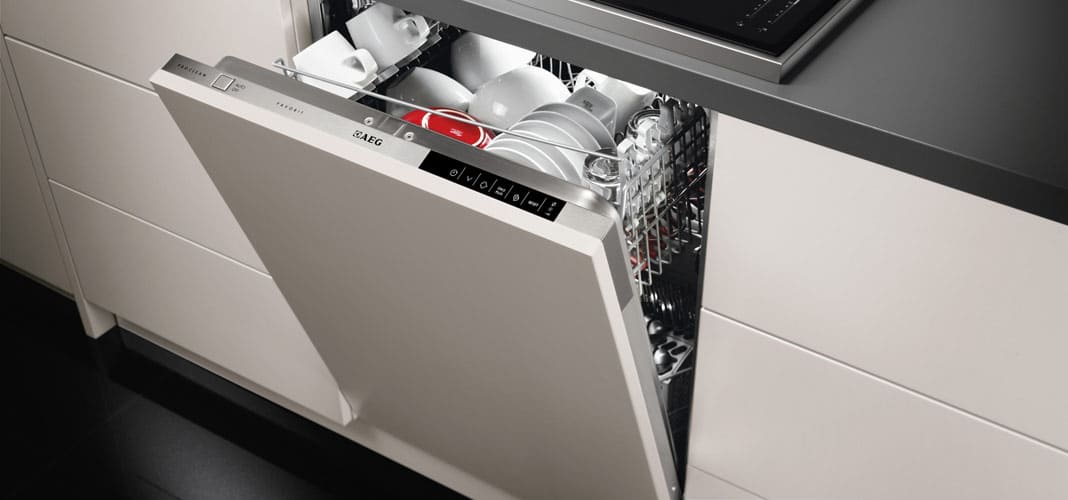
Full size dishwashers. This category includes units that can accommodate from 12 to 17 sets of kitchen utensils, each of which can consist of 6-8 items (plates, saucers, cups, cutlery). This type is suitable for large families with children. The standard criteria for this category are as follows: height - 81.5-82 centimeters, width - 55 centimeters, depth - 59.5-60 centimeters. There are a large number of programs and functions provided here, work can be carried out using electronic control, they are reliably protected in case of leaks or other malfunctions, they have many baskets for dishes.
Narrow dishwashers. Such units are designed for 910 sets of dishes, which is a universal indicator. Their price is quite affordable, they are spacious and consume a relatively small amount of water and electricity. Standard sizes: height - 81.5-82 centimeters, width - 54-55 centimeters, depth - 44-45 centimeters.
Compact dishwashers. Compact dishwashers have the most affordable prices. They can hold up to 6 sets of dishes. Height - 43-45 centimeters, width - 55 centimeters, depth - 49-51 centimeters. This type of dishwasher is perfect for a small family or single people. They can be loaded with pots and pans and have a compartment for cutlery.They are usually installed under the sink or in a kitchen niche.
Criteria for choosing dishwashers
Before making your final choice of dishwasher model, you should consider some characteristics of the new machine. The price positions of many models are directly related to the technical features described below:
- Energy consumption. The electricity consumed by a device is usually indicated by letters. The most common models are class “A” and “A+”, which consume about 20 liters when fully loaded with dishes. Hand washing will use much more water.
- Energy efficiency. This criterion depends on the availability of washing programs in the machine. Depending on the size and capacity, water and electricity consumption will increase.
- Connection to water flow. Different types of dishwashers can be connected to hot or cold water. More often, the washing mashine is connected to cold water, since it is softer, which gives the best results when washing.
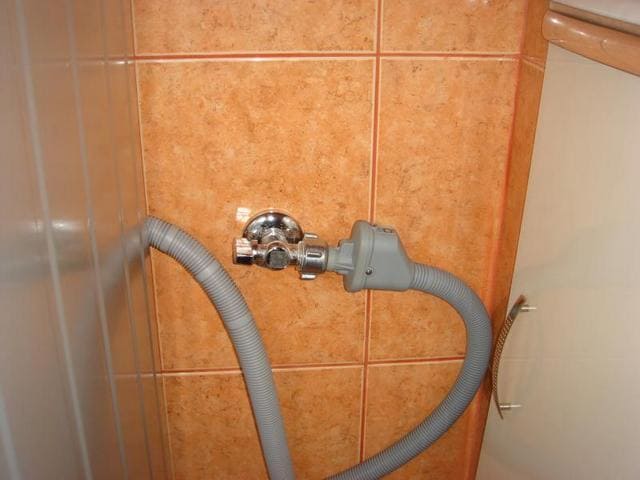 The disadvantage of this connection is that cold water supply has a higher electricity consumption, because it is necessary to heat the water. If you connect to a hot water source, less energy is wasted. Some models can be connected to two water sources at once, but the price category of such devices will be much higher.
The disadvantage of this connection is that cold water supply has a higher electricity consumption, because it is necessary to heat the water. If you connect to a hot water source, less energy is wasted. Some models can be connected to two water sources at once, but the price category of such devices will be much higher. - Volume. The maximum noise a dishwasher can make is 60 decibels. The best option is a noise level of 45-50 decibels.
- Trays for dishes. It all depends on the desire of the consumer and the amount of dishes that require processing. Any model of dishwasher has a separate tray for washing cutlery.
- Dish basket. The optimal choice of tank volume into which dishes are loaded would be capacity for 10 sets of dishes. Such a device will not take up much space.
- Drying. Many units presented in stores have a system for drying dishes, but usually the dishes dry naturally due to the drainage and evaporation of water.
- Washing programs. Depending on the presence of certain programs and functions, each dishwasher has its own quality of washing dishes. The main functions are:
| Mode | Water temperature | Cycle time | Distinctive features |
| Basic | 55-65°C | 2-3 hours | Universal use of any kitchen utensil |
| Heavy soiling | >65°С | 1-1.5 hours | Active use of detergents |
| Soak | <40°C | 1-1.5 hours | Increased work cycle without increasing t |
| Fast | 40-60°C | 0.5-1 hour | Bringing freshness to stagnant dishes |
Top 12 built-in dishwashers
We present the current top list of the best built-in dishwashers of 2020, divided into several groups by category.
Compact dishwashers:
- MAUNFELD MLP-06IM.
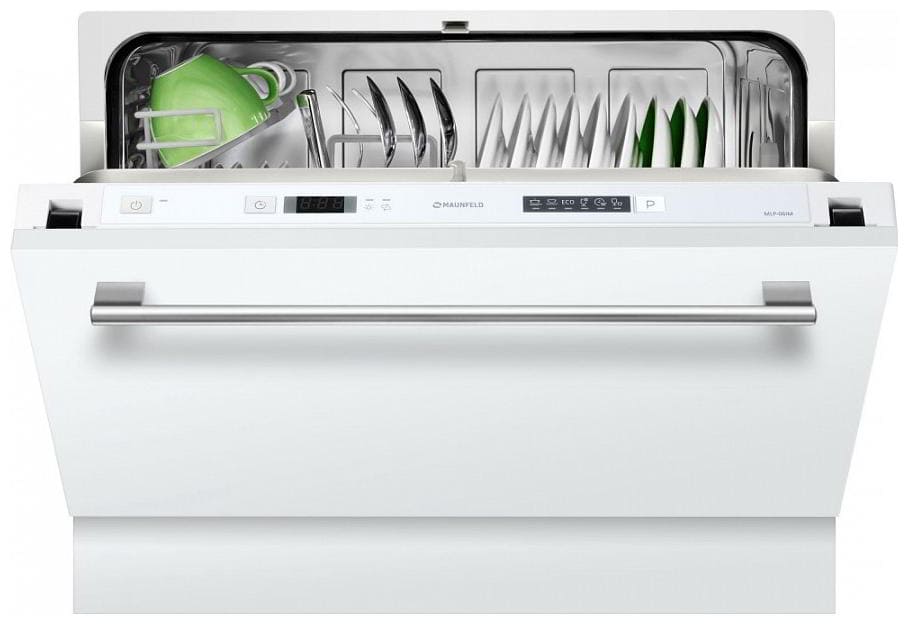 The model has a good warranty. There are 6 programs with electronic control and digital display. It consumes relatively little water - 6.5 liters, while producing noise of 49 decibels. Contains 6 sets, you can adjust the water hardness. Protection against leaks is only partial here, controlled by buttons.
The model has a good warranty. There are 6 programs with electronic control and digital display. It consumes relatively little water - 6.5 liters, while producing noise of 49 decibels. Contains 6 sets, you can adjust the water hardness. Protection against leaks is only partial here, controlled by buttons. - KRONA HAVANA 55 CI.
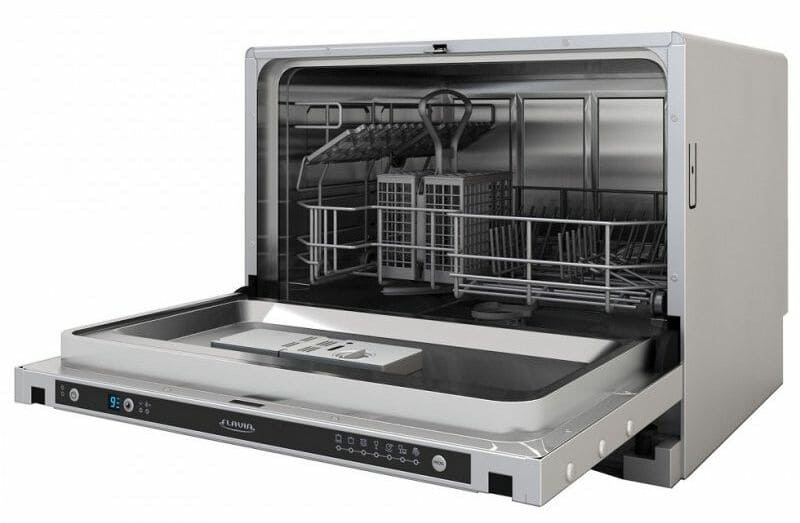 It also holds up to 6 sets of dishes and takes up very little space. Energy consumption is very small. There are no automatic programs and it is quite noisy.
It also holds up to 6 sets of dishes and takes up very little space. Energy consumption is very small. There are no automatic programs and it is quite noisy. - FORNELLI CI 55 HAVANA P
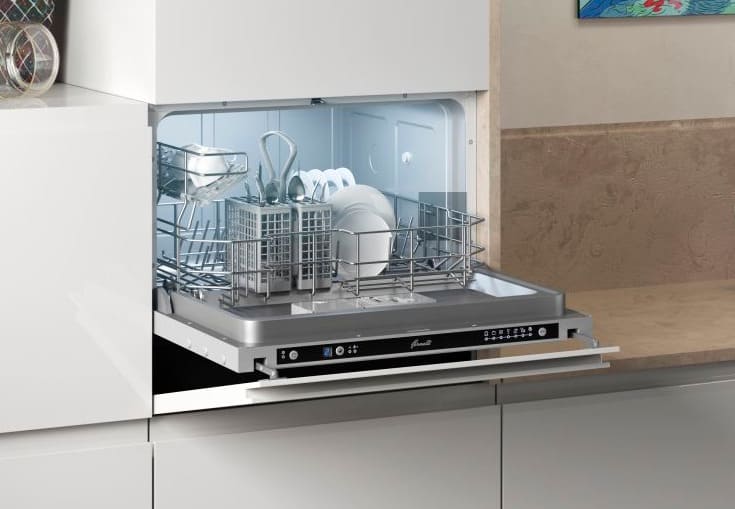 Economical water consumption - 6.5 liters, has partial protection against leaks. Ideal for small kitchens.
Economical water consumption - 6.5 liters, has partial protection against leaks. Ideal for small kitchens.
Narrow dishwashers:
- BOSCH SERIE 6 SPV66TD10R.
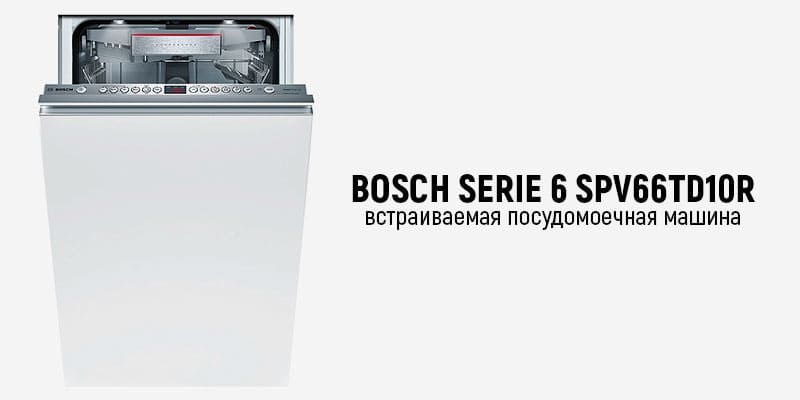 One of the best representatives of functional narrow machines. The model is not cheap at all, but the price matches the quality. Holds 10 sets of dishes, uses water and electricity sparingly, and is very quiet. Has a memorable design.
One of the best representatives of functional narrow machines. The model is not cheap at all, but the price matches the quality. Holds 10 sets of dishes, uses water and electricity sparingly, and is very quiet. Has a memorable design. - ELECTROLUX ESL 94585 RO.
 It is a worthy competitor to the previous model. The door opens automatically at the end of the cycle, is designed for 9 sets of kitchen utensils, and is almost silent. This machine does not have such a long warranty period.
It is a worthy competitor to the previous model. The door opens automatically at the end of the cycle, is designed for 9 sets of kitchen utensils, and is almost silent. This machine does not have such a long warranty period. - BOSCH SPV45DX10R.
 Excellent value for money and quality. Low noise, average water consumption (8.5 liters), high degree of protection against leaks.
Excellent value for money and quality. Low noise, average water consumption (8.5 liters), high degree of protection against leaks. - HOTPOINT-ARISTON HSIC 3T127 C.
 Italian brand. Has high efficiency and low noise.
Italian brand. Has high efficiency and low noise.
Full size dishwashers:
- BOSCH SMI88TS00R.
 A true luxury among dishwashers. Excellent German quality, plenty of space for loading 14 sets of dishes, incredibly low noise level (40 decibels). It will definitely protect against leaks. The price leaves much to be desired.
A true luxury among dishwashers. Excellent German quality, plenty of space for loading 14 sets of dishes, incredibly low noise level (40 decibels). It will definitely protect against leaks. The price leaves much to be desired. - BOSCH SERIE 4 SNV46KX00 E.
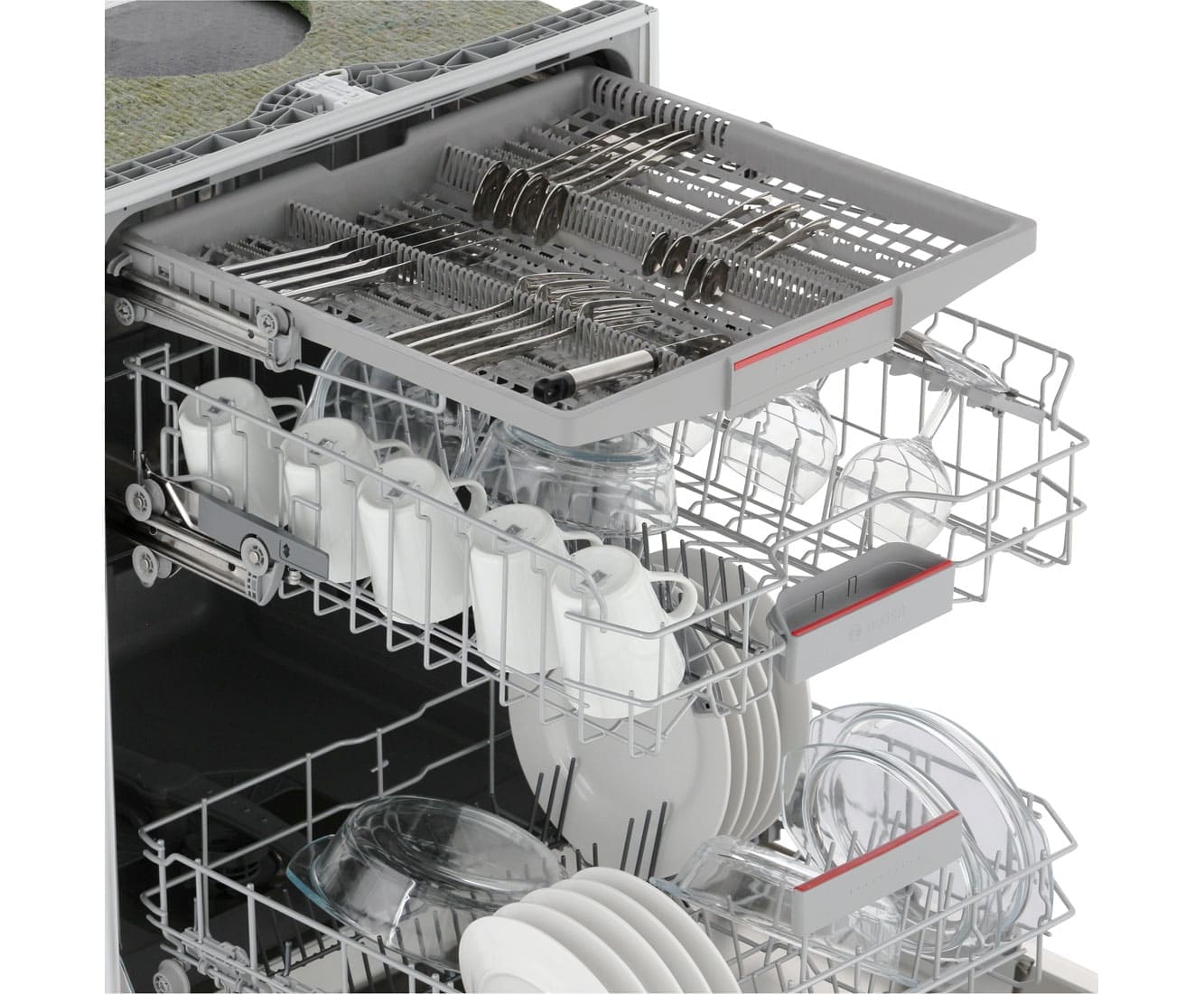 It has good characteristics - average water consumption (7.5 liters), energy. Holds 13 sets of dishes, protects against emergency leaks, and has a timer. There is no partial loading mode here.
It has good characteristics - average water consumption (7.5 liters), energy. Holds 13 sets of dishes, protects against emergency leaks, and has a timer. There is no partial loading mode here. - GORENJE GDV
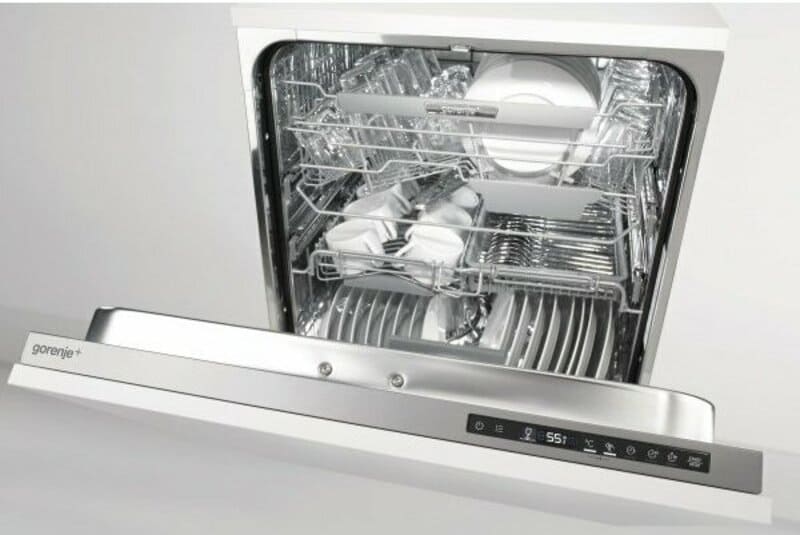 Model from Slovenian manufacturer. There are 5 operating programs, capacity – 17 sets. Little noise, sensor for control. Protection "Aqua Stop".
Model from Slovenian manufacturer. There are 5 operating programs, capacity – 17 sets. Little noise, sensor for control. Protection "Aqua Stop". - BOSCH SMV 25FX01 R.
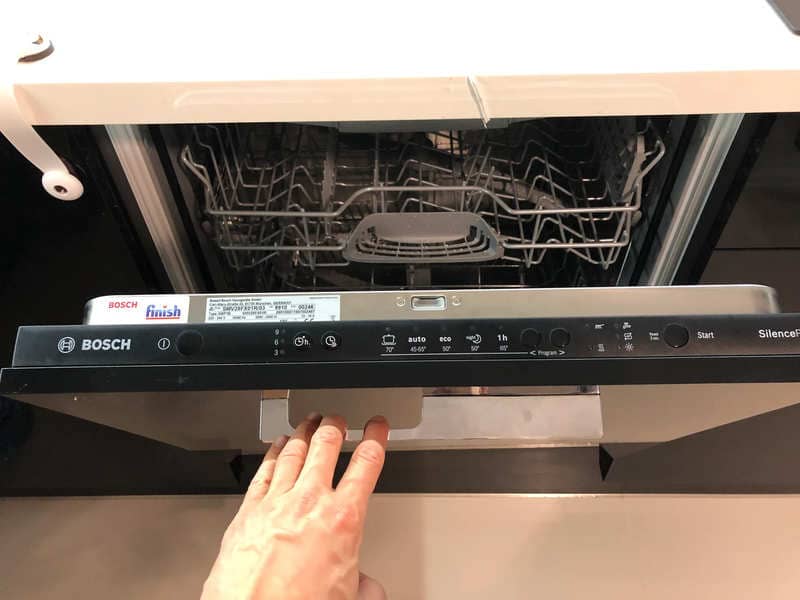 Budget German option. Allows you to accommodate 13 sets of dishes, consumes 9.5 liters of water. Protects against leaks. Does not have a digital display.
Budget German option. Allows you to accommodate 13 sets of dishes, consumes 9.5 liters of water. Protects against leaks. Does not have a digital display. - ELECTROLUX EEA 917100 L.
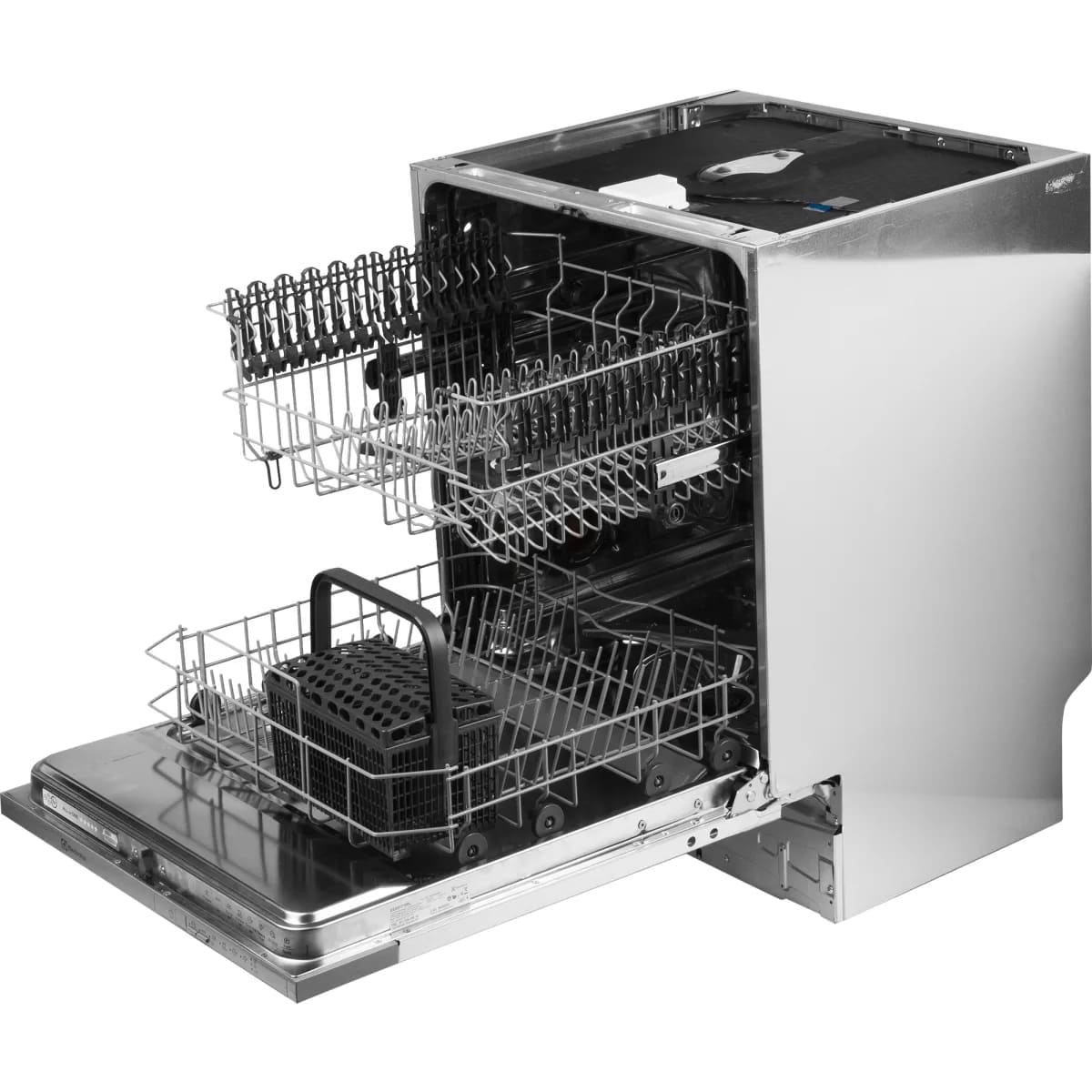 Fairly simple configuration. Loading 13 sets of dishes, consumption - 11 liters of water. Made in Poland. Small price tag.Does not have a countdown timer.
Fairly simple configuration. Loading 13 sets of dishes, consumption - 11 liters of water. Made in Poland. Small price tag.Does not have a countdown timer.
Conclusion
A built-in dishwasher is undoubtedly a good investment, as it will save a lot of money, valuable time and physical strength in the future. The dishwasher will be a great addition to the interior of the kitchen.






